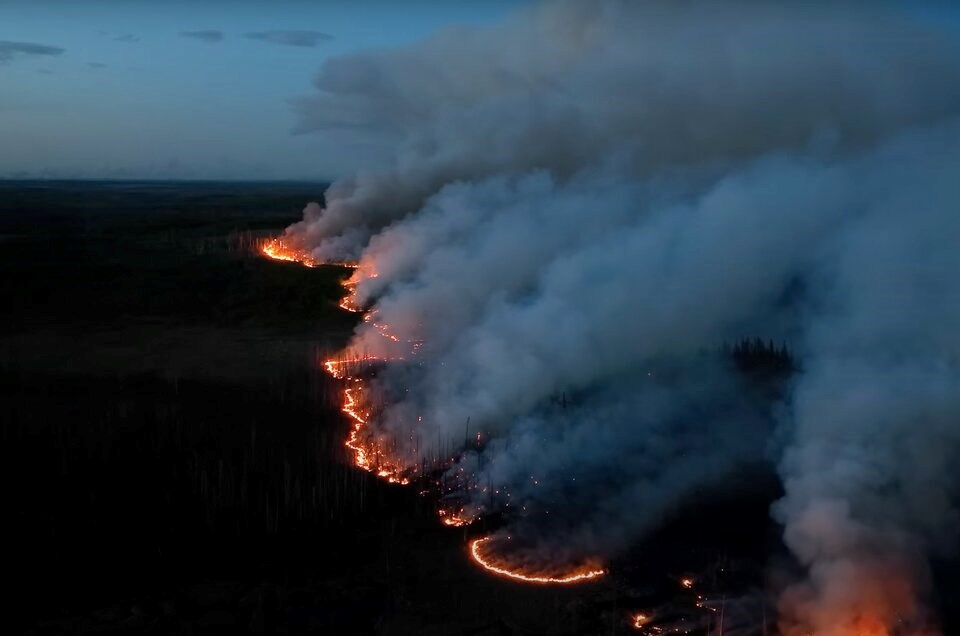Temperatures across the planet are expected to surge to record levels over the coming five years as a naturally occurring El Niño event collides with the effects of human-caused global warming, the World Meteorological Organization (WMO) said Wednesday.
There's a 98 per cent chance the next five years will surpass 2016 as the hottest year ever recorded, and a 66 per cent chance annual average temperatures will exceed 1.5 degrees Celsius of warming above pre-industrial levels, according to the latest report from the WMO.
Global average temperatures could climb as high as 1.8 C above pre-industrial levels from 1.15 C in 2022. The global weather organization said the temperature surge does not mean the planet will permanently exceed 1.5 C of warming — the heating threshold countries agreed to at the 2015 Paris accords.
“A warming El Niño is expected to develop in the coming months and this will combine with human-induced climate change to push global temperatures into uncharted territory,” said WMO Secretary-General Petteri Taalas.
“This will have far-reaching repercussions for health, food security, water management and the environment. We need to be prepared.”
El Niño makes hot trend hotter
Even small increases in global average temperatures can influence extreme weather events. The 2021 North American heat wave, which was thought to have killed nearly 800 British Columbians, was made at least 150 times more likely due to human-caused global warming, scientists later found.
The impact of a warming climate has been buffered over the last three years by La Niña conditions — a natural climate cycle in the South Pacific that drives cooler than average conditions in much of the Northern Hemisphere.
That pattern ended in March 2023, and as the El Niño pattern gains strength in the coming months, it’s expected to compound an increase in global temperatures.
Bill Merryfield, a research scientist who works on the Environment and Climate Change Canada models that fed the WMO report, said he’s already seeing an El Niño pattern being born off the coast of South America.
“The models predict it will grow and develop over the summer and into the fall, peaking in the winter,” he said of El Niño’s impact on B.C. “It’s a fair indication that we will see less snow than usual. Perhaps none at all.”
Some areas hit harder than others
Climate models don’t forecast a future with 100 per cent certainty. Instead, they use decades of observational data combined with global circulation patterns to indicate the odds hot summers or wet winters will dominate future weather patterns.
“It’s a little bit like if you’re watching a baseball player hit,” he said. “It’s like knowing their batting average.”
Between 2023 and 2027, the WMO models indicate near-surface temperatures will climb above average across nearly every region of the Earth’s land mass.
“We will almost certainly see the global temperature record broken in the next five years,” said Merryfield.
Some parts of the planet are expected to be hit harder than others. Average temperatures are expected to be especially high over central Eurasia, the Mediterranean region, and western North America.
And in the Arctic, a spike in near-surface temperatures is likely to be three-times the global mean.
Hot B.C. weather a sign of future summers
The WMO's regional models show B.C. will likely face hotter than average summer temperatures over the next five years.
That trend comes as record-breaking temperatures have already led to raging early season wildfires and floods across Alberta and B.C.
Merryfield says that his team has relatively high confidence that the hot weather will continue, with June, July and August set to be warmer than historical norms.
“There’s quite a bit of concern about this with the forest fires and other heat impacts,” he said.
At the global level, Merryfield says the odds of such summers repeating themselves over the coming years is only growing. And with a shift to warmer temperatures, extreme weather events that were “really improbable” in recent decades suddenly become “much, much more likely,” Merryfield said.
“When you add that up, the forest fire danger as we’re seeing currently, we don’t expect that to diminish,” he said.
“We can expect to see conditions that we have never been seen before.”



